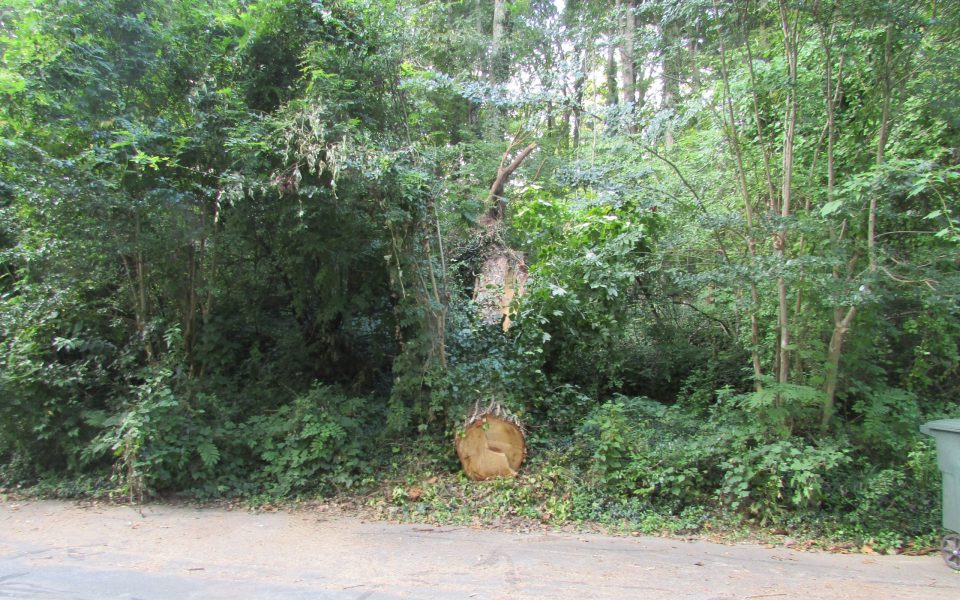The sound of the tree toppling over woke both my wife and me around 4:30 in the morning, and I suggested she check on our 3-year-old daughter. In the fog of sleep I didn’t get a clear report of the treefall, but it must have been a low, powerful heave; I just knew something had fallen.
My wife peered out the bedroom window to the street below our sloping front yard, beckoning me to look. We heard the crackling sound of unharnessed electricity, a sizzle, and, only moments later, a pair of booms as light flashed from the downed power lines and they shorted out. Soon our next-door neighbor, a retired vice cop, was out in front of his house with a high-powered flashlight, and we saw a car turned diagonally in the street, like a scene from a zombie apocalypse. The terrified driver must have discerned the electrical lines tumbling down to their left and swerved to the right to avoid making contact while slamming on the brakes.
The next morning, around 7:30, I ventured down the street to survey the damage. One of the high-line poles had snapped in two about midway, and the top half was helplessly dangling from the downed line. Then, a little further down the street I saw it: A large trunk not quite three feet in diameter encased in ivy like a heavy winter jacket lay across the street atop the lines.
If you could pick one issue that has pushed the well-heeled residents of Greensboro’s old-line neighborhoods with a healthy tree canopy — think Westerwood and Fisher Park — into a state of open revolt, it would almost certainly be the severe tree cutting and limb removal undertaken by Duke Energy’s contractors. Greensboro City Council even passed an ordinance to impose tighter restrictions on the practice, although it was neutered by the NC Utilities Commission.
The reason for Duke Energy’s aggressive vegetation control is only to protect their lines. That vigilance translates into a financial benefit that fattens the salaries of the utility’s executives or gets returned to ratepayers, depending on how the spoils are apportioned.
I couldn’t help but think as I watched a battalion of tree trimmers and utility trucks roll in to the neighborhood that Duke could have saved a huge amount of expense and trouble — with minimal expense and absolutely no intrusion — by simply hiring someone to pull the damn ivy off that tree. In comparison to the butchery committed in Westerwood two years ago when contractors toppled trees and dropped limbs, no one in my neighborhood on the west side of Lindley Park would have complained one bit about them removing ivy.
When we first moved into our new house in May 2015, our neighbor, the retired vice cop, told me: “You need to pull the ivy out of those trees.”
He was right. I used a handsaw and a pair of loppers to remove a two-foot band of ivy around the base of the trees that line the northern boundary of our property along Walker Avenue. Over the intervening months I’ve pulled 20-foot lengths of dead ivy out of the trees. My neighbor appears to have been on to something: Not one of the giant deciduous trees has toppled over and crashed through the roof of our house.
Just thought I would share a bit of expertise from the Lindley Park home guard with our powerful energy overlords.
Join the First Amendment Society, a membership that goes directly to funding TCB‘s newsroom.
We believe that reporting can save the world.
The TCB First Amendment Society recognizes the vital role of a free, unfettered press with a bundling of local experiences designed to build community, and unique engagements with our newsroom that will help you understand, and shape, local journalism’s critical role in uplifting the people in our cities.
All revenue goes directly into the newsroom as reporters’ salaries and freelance commissions.


Leave a Reply